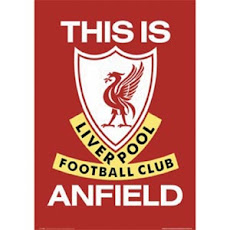
Part Four:
Low Ball. High Ball.
by rick olivares
Low Ball. High Ball.
by rick olivares
The Filipino Premier League kicked off on the ominous date of September 21, 2008 at the Philsports pitch. And ironically, a military team, Army FC was going to play in the first match against Pasargad FC (although they now hardly feature the Iranian players that once staffed the line-up). Army, long the haven for provincial footballers who wanted to continue playing, beat Pasargad 2-1.
In the Press Kit that was provided to the media, there were eight teams listed in the latest “national” league. With the terrific showings and jump in standings of the Men’s National Team, there was a renewed interest in football in the country and the Philippine Football Federation wanted to utilize the FPL as a means to showcase the newfound awareness of the sport.
Except that of the eight teams listed: Ateneo FC, Diliman FC, Giligan’s, Mendiola United, Pasargad FC, Philippine Air Force FC, Philippine Army FC, and Union FC, the Air Force did not suit up opting to stay at the Terry Razon Cup which not only was similar to the FPL but had more teams with eleven.
The military team was replaced just in time by Arirang FC, a club made up entirely of expatriate Koreans and was coached by Chul-So Kim, who also was handling the Far Eastern University Women’s Team.
A total of 26 matches were played in four months and coincidentally, Army FC also saw action on the final playing day as they beat Giligan’s 2-0 for the first ever FPL title on December 14.
One team, Union FC did not even finish the tournament citing the lack of funds to continue.
It was a troubled if not innocuous beginning for the FPL. For years, the PFF hosted a variety of national tournaments from the P-League to the National Open right down to the FPL.
But the flaw of the FPL, whether due to semantics or planning was it only featured clubs from the National Capital Region. It had excluded teams from the provinces. Former National Coach Juan Cutillas took the federation’s leadership to task for the poor start. “How can you call it a ‘premier league’ when you have weekend warriors playing and many of them were overweight with bulging stomachs? That does not help the image that we want to project. And then you keep it to Manila only.”
Even worse, the PFF declared the teams that played in the Terry Razon Cup could not play in the FPL (although the NCRFA which ran the Razon Cup allowed teams to crossover). Although the rules were nebulous, there was no limit or specifics with regards to eligibility or even foreign players. Arirang FC was composed entirely of Koreans.
It was politics at its best and not only was it a waste of resources but it underscored the rift between the association and its parent organization.
Vision Asia, the think tank project under the Asian Football Confederation, was in Manila for a two week study on Philippine football. They recommended that the league be placed under the auspices of their organization to manage it more effectively.
They noted that the owners of the eight clubs comprise the board. “This is not optimum as conflicts may arise,” it was said in Vision Asia’s report. “Some of the top clubs and teams are not participating. A first step would be to establish similar leagues in other areas.”
It wasn’t the first “national” tournament conducted by the PFF.
There was the P-League that ran for three years in the late 1990’s. The first one was held in Manila where it failed for the lack of interest. It was moved later on to Davao then Dumaguete where it played to packed crowds. But the lack of funds and corporate support eventually killed the fledging league.
Then during the tenure of Johnny Romualdez as PFF President, the Men’s Open Cup, which was wider in scope was held. It required all PFF members to participate in the tournament with each province hosting their own qualifiers with the winners advancing to the regional level. The champion of the regional level would advance to the national level to determine the overall champion.
During Romualdez’ last year, it was likewise discontinued for lack of funds although when he stepped down to give way to the current President Jose Mari Martinez, he left Php 2.4 million.
After Vision Asia submitted its report, they recommended that the FPL be developed into a true national league with the champions participating in the AFC President’s Cup and the Asian Football Federation Club tournament.
But as always, it boils down to funds. The problem of football and most other sports in the country is that there is hardly anything to aspire for after the collegiate level since not everyone makes it to the national team. Those who live for the game go to the Armed Forces where they not only train how to jump out of helicopters and fire an automatic rifle, they get to continue playing and they become a feeder for the national squad.
As proven by the Gothia and Helsinki Cup victories in the 1980’s, the Philippines can compete with the rest of the world at the lower levels. But there is a significant drop in skill and exposure once players reach college because many of them do not push themselves farther since there is no money in football and it is more practical and realistic to get a real job.
In this part of the globe, the world game gives way to more worldly concerns.
Post script: The second season of the FPL has been temporarily moved to June. Philsports has not given the green light for the use of the field because of unsettled debts. The PFF is waiting for more funds from Vision Asia to continue the tournament.
In the Press Kit that was provided to the media, there were eight teams listed in the latest “national” league. With the terrific showings and jump in standings of the Men’s National Team, there was a renewed interest in football in the country and the Philippine Football Federation wanted to utilize the FPL as a means to showcase the newfound awareness of the sport.
Except that of the eight teams listed: Ateneo FC, Diliman FC, Giligan’s, Mendiola United, Pasargad FC, Philippine Air Force FC, Philippine Army FC, and Union FC, the Air Force did not suit up opting to stay at the Terry Razon Cup which not only was similar to the FPL but had more teams with eleven.
The military team was replaced just in time by Arirang FC, a club made up entirely of expatriate Koreans and was coached by Chul-So Kim, who also was handling the Far Eastern University Women’s Team.
A total of 26 matches were played in four months and coincidentally, Army FC also saw action on the final playing day as they beat Giligan’s 2-0 for the first ever FPL title on December 14.
One team, Union FC did not even finish the tournament citing the lack of funds to continue.
It was a troubled if not innocuous beginning for the FPL. For years, the PFF hosted a variety of national tournaments from the P-League to the National Open right down to the FPL.
But the flaw of the FPL, whether due to semantics or planning was it only featured clubs from the National Capital Region. It had excluded teams from the provinces. Former National Coach Juan Cutillas took the federation’s leadership to task for the poor start. “How can you call it a ‘premier league’ when you have weekend warriors playing and many of them were overweight with bulging stomachs? That does not help the image that we want to project. And then you keep it to Manila only.”
Even worse, the PFF declared the teams that played in the Terry Razon Cup could not play in the FPL (although the NCRFA which ran the Razon Cup allowed teams to crossover). Although the rules were nebulous, there was no limit or specifics with regards to eligibility or even foreign players. Arirang FC was composed entirely of Koreans.
It was politics at its best and not only was it a waste of resources but it underscored the rift between the association and its parent organization.
Vision Asia, the think tank project under the Asian Football Confederation, was in Manila for a two week study on Philippine football. They recommended that the league be placed under the auspices of their organization to manage it more effectively.
They noted that the owners of the eight clubs comprise the board. “This is not optimum as conflicts may arise,” it was said in Vision Asia’s report. “Some of the top clubs and teams are not participating. A first step would be to establish similar leagues in other areas.”
It wasn’t the first “national” tournament conducted by the PFF.
There was the P-League that ran for three years in the late 1990’s. The first one was held in Manila where it failed for the lack of interest. It was moved later on to Davao then Dumaguete where it played to packed crowds. But the lack of funds and corporate support eventually killed the fledging league.
Then during the tenure of Johnny Romualdez as PFF President, the Men’s Open Cup, which was wider in scope was held. It required all PFF members to participate in the tournament with each province hosting their own qualifiers with the winners advancing to the regional level. The champion of the regional level would advance to the national level to determine the overall champion.
During Romualdez’ last year, it was likewise discontinued for lack of funds although when he stepped down to give way to the current President Jose Mari Martinez, he left Php 2.4 million.
After Vision Asia submitted its report, they recommended that the FPL be developed into a true national league with the champions participating in the AFC President’s Cup and the Asian Football Federation Club tournament.
But as always, it boils down to funds. The problem of football and most other sports in the country is that there is hardly anything to aspire for after the collegiate level since not everyone makes it to the national team. Those who live for the game go to the Armed Forces where they not only train how to jump out of helicopters and fire an automatic rifle, they get to continue playing and they become a feeder for the national squad.
As proven by the Gothia and Helsinki Cup victories in the 1980’s, the Philippines can compete with the rest of the world at the lower levels. But there is a significant drop in skill and exposure once players reach college because many of them do not push themselves farther since there is no money in football and it is more practical and realistic to get a real job.
In this part of the globe, the world game gives way to more worldly concerns.
Post script: The second season of the FPL has been temporarily moved to June. Philsports has not given the green light for the use of the field because of unsettled debts. The PFF is waiting for more funds from Vision Asia to continue the tournament.









No comments:
Post a Comment